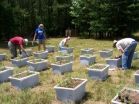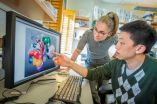(Press-News.org) Starch-based intravenous (IV) fluids used by the NHS to treat seriously ill patients are causing unnecessary deaths, according to a new Cochrane systematic review by researchers at the London School of Hygiene & Tropical Medicine.
Based on data from 25 randomised control trials, the researchers concluded that starch-based colloid fluids, used to stabilise patients with low blood pressure, are not only more expensive than saline-based crystalloid fluids, but may also be causing around 250 unnecessary deaths in the UK every year.
The study included 9,147 seriously ill patients after trauma, burns and surgery or those with severe infections who were randomly allocated to receive either colloid fluids or saline fluids in their resuscitation. Those receiving colloids were 10% more likely to die. The researchers are now calling on the NHS to stop using colloid fluids.
Lead author Dr Ian Roberts, director of the clinical trials unit at the London School of Hygiene & Tropical Medicine, said: "Starch solutions are widely used in the NHS and the evidence from our study shows that they kill patients. They are more expensive than saline and they increase the risk of death. British hospitals use far more starch solutions than most other countries. The ongoing use of colloids is unjustified."
The safety of using colloids containing hydroxyethyl starch has been debated for years. They are widely used to treat shock following severe blood loss by increasing blood volume but recent large high quality studies have linked starch use to renal failure. The trials also found more adverse reactions with starch. Crystalloids work in the same way but do not contain starch.
The European Medicines Agency is conducting a review into the safety of hydroxyethyl starch in critically ill patients but Dr Roberts believes that the NHS should take action now and has written to the Department of Health. He said: "We don't need to wait for starch solutions to be banned in order to take action in the NHS. We have a safer, less expensive alternative that is widely used around the world. The NHS should take action now."
###
For more information or to request interviews please contact the London School of Hygiene & Tropical Medicine press office.
Notes to Editors:
Perel P, Roberts I, Ker K. Colloids versus crystalloids for fluid resuscitation in critically ill patients. Cochrane Database of Systematic Reviews 2013, Issue 2. Art. No.: CD000567. DOI: 10.1002/14651858.CD000567.pub6
Paper available pre-embargo to the media from jbeal@wiley.com.
High colloid use in Britain: http://ccforum.com/content/14/5/R185
Calculation for number of deaths: Number of adult admissions to NHS critical care units each year = 115,674 (2010/2011 data from ICNARC case mix programme). Number of patients receiving fluid resuscitation = 42,799. Number of patients receiving colloid = 32,099. Number of patients receiving starch = 12,840. RR of death with STARCH=1.10. Risk of death in unexposed is 20%. For every 50 patients treated there is one extra death. Therefore starch use in British hospitals kill about 12840/50=257 patients each year. END
IV fluids used by NHS responsible for unnecessary deaths
2013-02-28
ELSE PRESS RELEASES FROM THIS DATE:
Supermassive black hole spins super-fast
2013-02-28
Imagine a sphere more than 2 million miles across - eight times the distance from Earth to the Moon - spinning so fast that its surface is traveling at nearly the speed of light. Such an object exists: the supermassive black hole at the center of the spiral galaxy NGC 1365.
Astronomers measured its jaw-dropping spin rate using new data from the Nuclear Spectroscopic Telescope Array, or NuSTAR, and the European Space Agency's XMM-Newton X-ray satellites.
"This is the first time anyone has accurately measured the spin of a supermassive black hole," said lead author Guido ...
Silver nanoparticles may adversely affect environment
2013-02-28
DURHAM, N.C. -- In experiments mimicking a natural environment, Duke University researchers have demonstrated that the silver nanoparticles used in many consumer products can have an adverse effect on plants and microorganisms.
Fifty days after scientists applied a single low dose of silver nanoparticles, the experimental environments produced about a third less biomass in some plants and microbes.
These preliminary findings are important, the researchers said, because little is known about the environmental effects of silver nanoparticles, which are found in textiles, ...
Research explores factors that impact adolescent mental health
2013-02-28
Research indicates that half of all lifetime cases of mental illness begin by age 14, well before adulthood. Three new studies investigate the cognitive, genetic and environmental factors that may contribute to mental health disorders in adolescence. The studies are published in Psychological Science and Clinical Psychological Science, journals of the Association for Psychological Science.
Social-Information-Processing Patterns Mediate the Impact of Preventive Intervention on Adolescent Antisocial Behavior
Kenneth A. Dodge, Jennifer Godwin, and The Conduct Problems ...
NuSTAR helps solve riddle of black hole spin
2013-02-28
An international team including Lawrence Livermore National Laboratory scientists has definitively measured the spin rate of a supermassive black hole for the first time.
The findings, made by the two X-ray space observatories, NASA's Nuclear Spectroscopic Telescope Array (NuSTAR) and the European Space Agency's XMM-Newton, solve a long-standing debate about similar measurements in other black holes and will lead to a better understanding of how black holes and galaxies evolve.
"We can trace matter as it swirls into a black hole using X-rays emitted from regions very ...
First grade math skills set foundation for later math ability
2013-02-28
Children who failed to acquire a basic math skill in first grade scored far behind their peers by seventh grade on a test of the mathematical abilities needed to function in adult life, according to researchers supported by the National Institutes of Health.
The basic math skill, number system knowledge, is the ability to relate a quantity to the numerical symbol that represents it, and to manipulate quantities and make calculations. This skill is the basis for all other mathematics abilities, including those necessary for functioning as an adult member of society, a ...
A game plan for climate change
2013-02-28
Researchers have successfully piloted a process that enables natural resource managers to take action to conserve particular wildlife, plants and ecosystems as climate changes.
The Adaptation for Conservation Targets (ACT) framework is a practical approach to assessing how future changes in air and water temperatures, precipitation, stream flows, snowpack, and other environmental conditions might affect natural resources. ACT enables scientists and managers to work hand-in-hand to consider how management actions may need to be adjusted to address those impacts.
"As ...
Changing shape makes chemotherapy drugs better at targeting cancer cells
2013-02-28
(Santa Barbara, Calif. –) Bioengineering researchers at University of California, Santa Barbara have found that changing the shape of chemotherapy drug nanoparticles from spherical to rod-shaped made them up to 10,000 times more effective at specifically targeting and delivering anti-cancer drugs to breast cancer cells.
Their findings could have a game-changing impact on the effectiveness of anti-cancer therapies and reducing the side effects of chemotherapy, according to the researchers. Results of their study were published recently in Proceedings of the National Academy ...
Retailers should re-size maternity wear for women throughout their pregnancies, MU study finds
2013-02-28
COLUMBIA, Mo. — Fashion retailers have seen an increase in demand for maternity wear in recent years, as sales for maternity clothing have increased while overall women's apparel sales have declined. Currently, most retailers produce maternity wear using a standardized size chart that begins with women in their seventh month of pregnancy. Retailers produce garments for women who are earlier in their terms by adjusting the sizes smaller proportionally based on the standardized chart. In a recent study, University of Missouri researcher MyungHee Sohn, an assistant professor ...
Reading the human genome
2013-02-28
Researchers with the U.S. Department of Energy (DOE)'s Lawrence Berkeley National Laboratory (Berkeley Lab) have achieved a major advance in understanding how genetic information is transcribed from DNA to RNA by providing the first step-by-step look at the biomolecular machinery that reads the human genome.
"We've provided a series of snapshots that shows how the genome is read one gene at a time," says biophysicist Eva Nogales who led this research. "For the genetic code to be transcribed into messenger RNA, the DNA double helix has to be opened and the strand of gene ...
Workstation design improvements for drone operators may reduce costs & mishaps, researchers suggest
2013-02-28
The U.S. Department of Defense reports that drone accidents in which personnel or aircraft are damaged or destroyed occur 50 times more often than mishaps involving human-operated aircraft. The U.S. Marines and Army reported 43 mishaps that involved human factors issues associated with drone ground control workstations and technology during 2006−2007.
Human factors/ergonomics (HF/E) researchers Qaisar Waraich, Thomas Mazzuchi, Shahram Sarkani, and David F. Rico suggest that multimillion-dollar drone losses might be prevented if long-established and broadly applied ...




